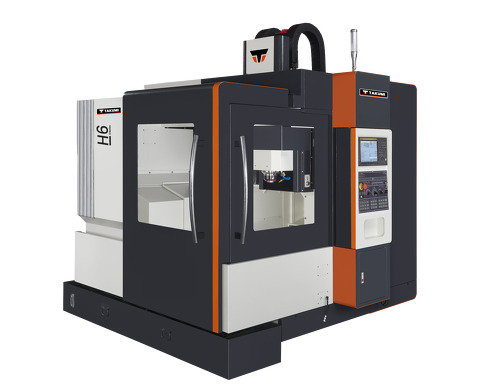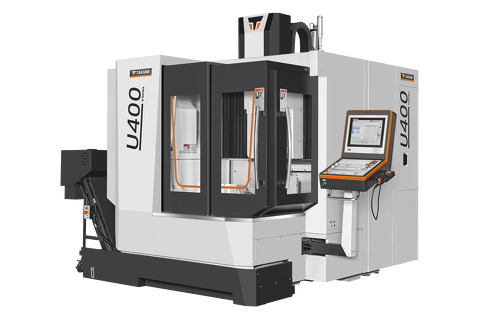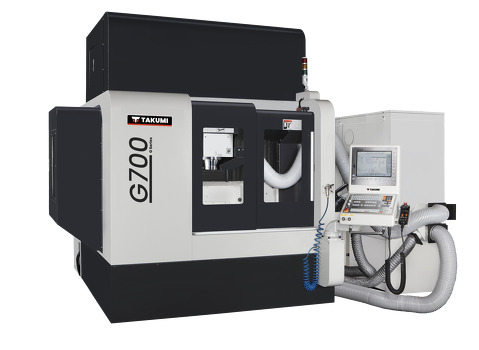- Machining center
- Control
- News & Media
- Company
- Blog
- Contact
Challenges Faced by Industries When Using CNC Machines
As industries increasingly rely on technology to enhance productivity and precision, CNC machines have become vital assets across manufacturing sectors. According to a recent report by Technavio, the global CNC machine market is projected to reach over $100 billion by 2025, reflecting a compound annual growth rate (CAGR) of 7.2%.

However, as the adoption of CNC machines grows, so too do the challenges associated with their integration and operation. Manufacturers face hurdles such as high initial costs, the need for skilled operators, and ensuring machine maintenance and uptime. Additionally, a study by the National Association of Manufacturers highlighted that 70% of manufacturers struggle with the complexity of programming and optimizing CNC machines for diverse production requirements.
This blog will delve into the CNC technology strategies that can help industries effectively navigate these challenges and maximize the benefits.
Common Technical Issues Encountered with CNC Machines
CNC machines have revolutionized manufacturing, but industries often face significant technical challenges when implementing these advanced tools. One common issue is inaccurate machining, which can stem from improper calibration or worn-out components. This not only affects product quality but can also lead to increased material waste. Regular maintenance and thorough calibration checks can help mitigate these issues, ensuring precision and reliability in machining processes.

Another prevalent challenge is software compatibility. As technology evolves, older CNC machines may struggle to integrate with modern programming languages or software updates. This can result in downtime and hinder productivity. To address this, companies should invest in training their staff on both the hardware and software aspects of CNC operations, creating a more adaptable workforce. Additionally, staying updated on software advancements can help ensure that machinery remains compatible.
Finally, understanding tooling wear is crucial for maintaining optimal machine performance. As tools diminish in sharpness, they can cause subpar finishes and increase the risk of machine damage. Implementing a scheduled inspection and replacement protocol can prevent excessive wear, thereby enhancing the overall efficiency of the CNC machines. This proactive approach not only extends equipment lifespan but also ensures consistent quality in the production output.
The Importance of Skilled Operators and Training in CNC Operations
The effectiveness of CNC (Computer Numerical Control) machines in various industries is significantly influenced by the skill level of operators. According to a report by the Manufacturing Institute, approximately 2.4 million jobs could remain unfilled in manufacturing by 2028 due to a lack of skilled workers. This skill gap is particularly evident in CNC operations, where precision and technical knowledge are crucial. CNC machines are complex, requiring operators to not only understand the machinery but also programming languages like G-code and CAD software. Without proper training, even the most advanced equipment may not achieve optimal performance.
Investing in training for CNC operators is essential for maximizing both productivity and quality. The National Institute for Metalworking Skills (NIMS) states that companies that offer comprehensive training programs can see productivity improvements by up to 25%. Furthermore, well-trained operators are more capable of identifying issues before they escalate into costly errors, enhancing overall operational efficiency. This emphasis on skilled training not only mitigates production challenges but also fosters a workforce that can evolve alongside technological advancements in the industry, ensuring competitiveness in a rapidly changing market.
Financial Implications: Cost Management in CNC Machining
The financial implications of utilizing CNC (Computer Numerical Control) machines in industry are significant, particularly in the realm of cost management. According to a report from the American Society of Mechanical Engineers (ASME), the initial investment in CNC technology can exceed $100,000 for advanced machines, not including the costs of installation and training. This upfront capital can be a major hurdle for small to medium-sized enterprises, which often operate with tighter budgets.
Moreover, the operational expenses associated with CNC machining must be meticulously managed to ensure profitability. The International Federation of Robotics indicates that while CNC machines can boost productivity by up to 30%, the return on investment (ROI) can be adversely affected by inefficient production processes or unoptimized machine utilization. For instance, manufacturers face challenges in minimizing downtime and managing power consumption, which can account for up to 20% of operational costs. Implementing effective cost control measures and regularly assessing production efficiency are critical for industries to capitalize on the benefits of CNC technology while maintaining financial health.

Material Limitations: Challenges in CNC Machining Compatibility
CNC machining has revolutionized manufacturing by enabling precision and efficiency. However, one of the significant challenges industries face is material limitations in CNC machining compatibility. Different materials behave differently under machining processes, and not all are suited for CNC technology. For instance, metals like titanium may offer strength and durability but pose difficulties due to their hardness and propensity for tool wear. This incompatibility can lead to increased costs and extended lead times as manufacturers must continually adjust their processes to accommodate varying material characteristics.
Moreover, the choice of materials can also affect the end product's quality and durability. Some materials may warp or bend during the machining process, which complicates achieving the tight tolerances that CNC machines are known for. Industries must carefully select materials that ensure compatibility with CNC processes while balancing attributes like cost, machinability, and end-use requirements. As a result, manufacturers often invest in extensive testing and research to identify the optimal material solutions for their CNC operations, highlighting the significant impact of material limitations on overall productivity and product quality.
Challenges Faced by Industries When Using CNC Machines
This chart illustrates the common material limitations faced by industries when utilizing CNC machining. The data reflects the percentage of manufacturers reporting issues with specific material types due to compatibility challenges.
Ensuring Precision: Overcoming Quality Control Challenges in CNC Manufacturing
Quality control is a critical aspect of CNC manufacturing, as achieving precision in machined parts directly impacts overall production efficiency and end product performance. One of the primary challenges industries face is the variability in raw material properties. Even slight inconsistencies in material can lead to deviations in the final dimensions of CNC machined components. This requires manufacturers to invest in robust material testing procedures and to continuously monitor inputs to ensure that only high-quality materials are used in production.
Another significant challenge is the need for advanced quality control systems and methodologies. Traditional inspection techniques may not suffice in the increasingly complex environments of modern CNC machining. Implementing technology-driven solutions, such as automated inspection systems and real-time monitoring, can help address these challenges. These systems not only enhance precision by catching errors early in the manufacturing process but also reduce waste and rework, thereby optimizing workflow and productivity. Embracing these innovations is essential for industries to maintain quality standards and meet customer expectations in a competitive market.
Challenges Faced by Industries When Using CNC Machines - Ensuring Precision: Overcoming Quality Control Challenges in CNC Manufacturing
| Challenge | Description | Impact | Solutions |
|---|---|---|---|
| Operator Skill Variability | Differences in operator skills lead to inconsistent results. | Increased scrap rates and rework costs. | Regular training programs for operators. |
| Machine Calibration | Inconsistent machine calibration can lead to inaccuracies in production. | Potential for defective products and operational delays. | Implementing a routine calibration schedule. |
| Material Quality | Variability in raw materials can affect production quality. | Increased rate of non-conformance and customer returns. | Establishing strict material quality standards and supplier audits. |
| Technology Integration | Challenges in integrating new technologies with existing systems. | Reduced efficiency and increased operational costs. | Phased technology implementation and comprehensive training. |
| Data Management | Inefficient handling of production data can hinder quality control. | Inability to track defects and refine processes. | Implementing advanced data analytics tools to monitor production. |
Related Posts
-

Ultimate Comparison of the Top 5 CNC Vertical Machining Centers: Performance Metrics and ROI Analysis for Global Buyers
-

Understanding the Features of the Best CNC Machining Center for Your Business
-

7 Secrets to Finding the Best CNC Precision Machining Suppliers Worldwide
-

Ultimate Comparison of Top Providers for Best CNC Precision Machining
-

Ultimate Guide to the Top Five Vertical CNC Machines Compared for Best Performance
-

Understanding Global Industry Standards for Best CNC Machining Precision Production



